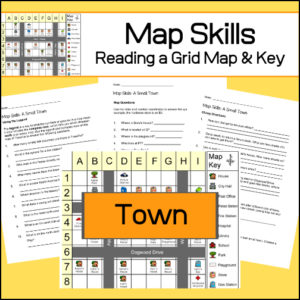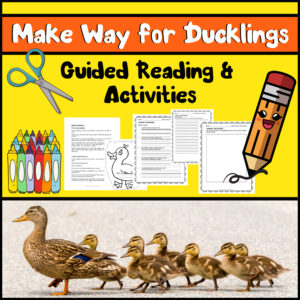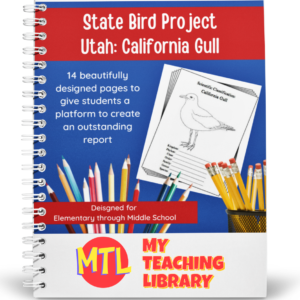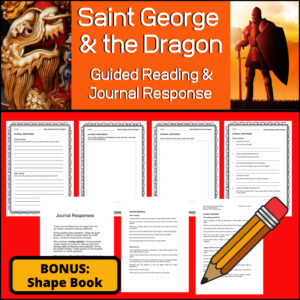Description
All-Access members do not pay for this or any resource. Become an All-Access member today!
________________________
|
Get the MOST from My Teaching Library by connecting with us here: |
$4.00
This engaging resource offers guided reading questions, student journal responses and other activities that will help students enjoy and appreciate the book and illustrations of The Girl Who Loved Wild Horses, written and illustrated by Paul Goble (Caldecott winner 1979) . During this unit, students will be asked to give opinions, answer factual questions about the story, use critical thinking skills and be creative!
For the Teacher:
For the Students:
About the story: The story focuses on a young Native American girl who has a deep affinity for wild horses. She cares for the horses that her tribe relies on for the nomadic hunting of buffalo. One day, the herd stampedes due to a thunderstorm, while the girl is among them. She climbs onto the back of one of the horses, and is carried far away from their usual grazing grounds. The next day, the girl awakes to see a beautiful spotted stallion who identifies himself as the leader of all the wild horses, and welcomes her to live with them. Meanwhile, the girl’s tribe searches for her. About one year later, two hunters spot the girl riding with the horses, but she is driven away with the rest of the herd. The hunters return to the tribe with this news, and riders are sent in pursuit. The stallion defends the girl, but she is caught when her horse stumbles. The girl returns home, but is sad to leave the horses. She falls ill with no sign of improvement. The girl asks if she can return, and her parents honor her wish to live among the wild horses again. Each year, she would return to her parents with the gift of a colt. Then one year, she does not return. When the hunters see the wild horses again, they see a mare riding alongside the stallion. They believe this horse to be the girl transformed, which brings the tribe great pride to know they have one of their own riding among them.
All-Access members do not pay for this or any resource. Become an All-Access member today!
________________________
|
Get the MOST from My Teaching Library by connecting with us here: |
Only logged in customers who have purchased this product may leave a review.

Students will be given a grid map and key of a small town and asked several questions requiring them read and navigate throughout the map. There are also two additional activities to extend learning (through writing and creative design). Answer Key included.

This fun and engaging resource offers guided reading questions and student activities that will help students get the most from Robert McCloskey’s book, Make Way for Ducklings. (1942 Caldecott Medal award winning book!)
For the Teacher:
For the Students:
All writing pages include dashed lines because this has been designed for 1st – 2nd grades and will allow students to practice correct handwriting.

Studying the state of Utah and state symbols? What is the state bird of Utah ?
This project-based unit is designed to help students study and record information about Utah ’s state bird: California Gull
What type of pages are contained in this set:
– A map page (for the state)
– Scientific classification page
– A page for students to give details about the bird’s physical description, habitat, diet, life span and reproduction
– A page where students will do additional map work to show where in the U.S. the bird lives in addition to migration information
– Coloring page
– Several pages on which students can use for expository and/or creative writing as well as sections in which students may draw.
14 pages in all and is designed for different levels / abilities.
My Teaching Library has a notebooking set for each of all 50 states. In addition, you can get all of them bundled!
Here are other bird related products you’ll love…

This engaging resource offers teacher questions and activities that will help students enjoy and gain greater appreciation for Saint George and the Dragon, written by Margaret Hodges and illustrated by Trina Schart Hyman (1985 Caldecott Medal award winning book) During this unit, students will be asked to give opinions, answer factual questions about the story, use critical thinking skills and be creative!
For the Teacher:
Suggested Pre-Reading, About the Cover, After Reading and About the Artwork questions are provided. These should be teacher directed.
For the Students:


Reviews
There are no reviews yet.